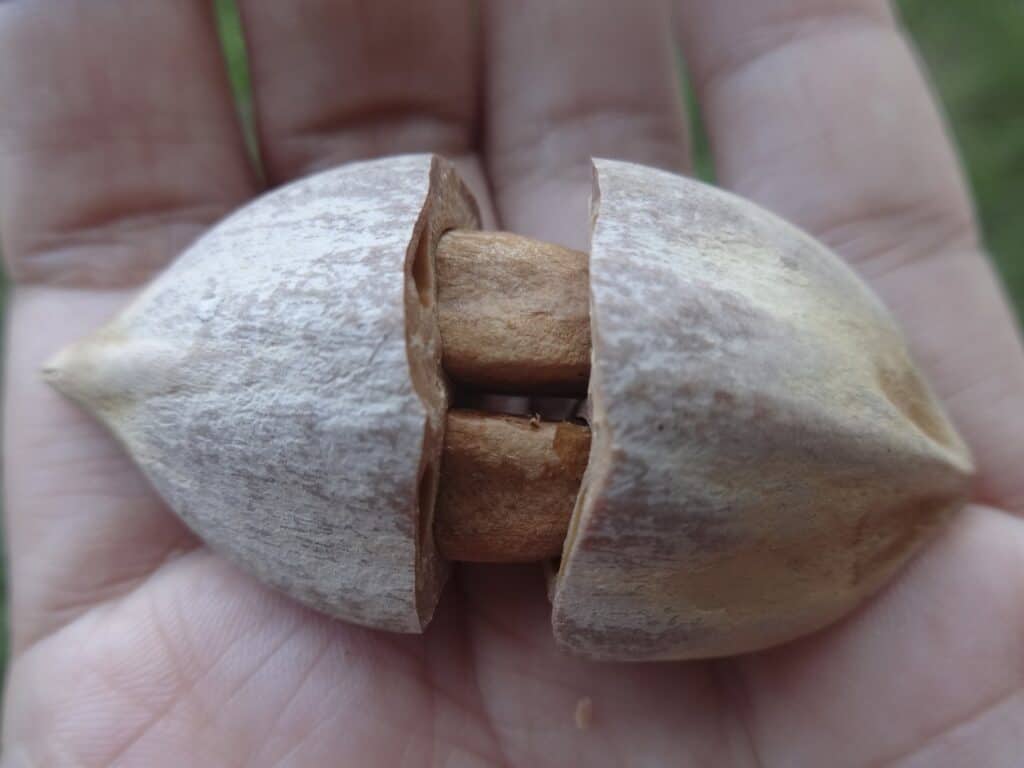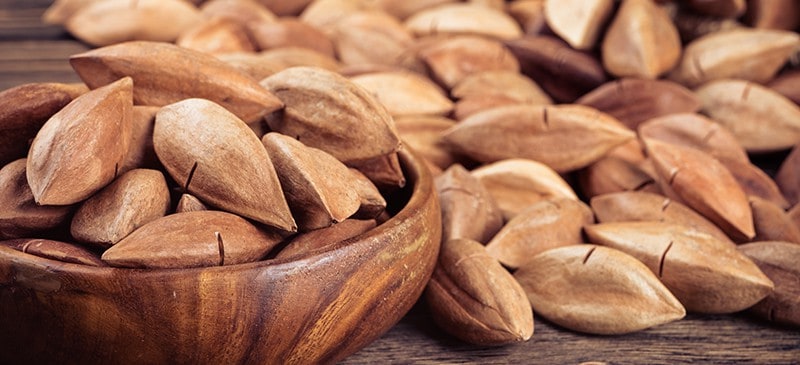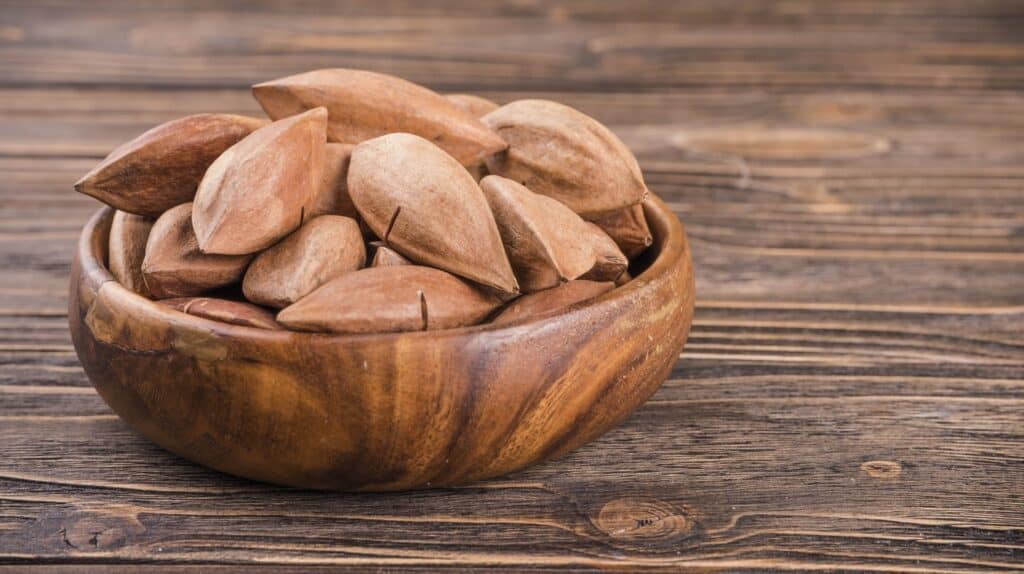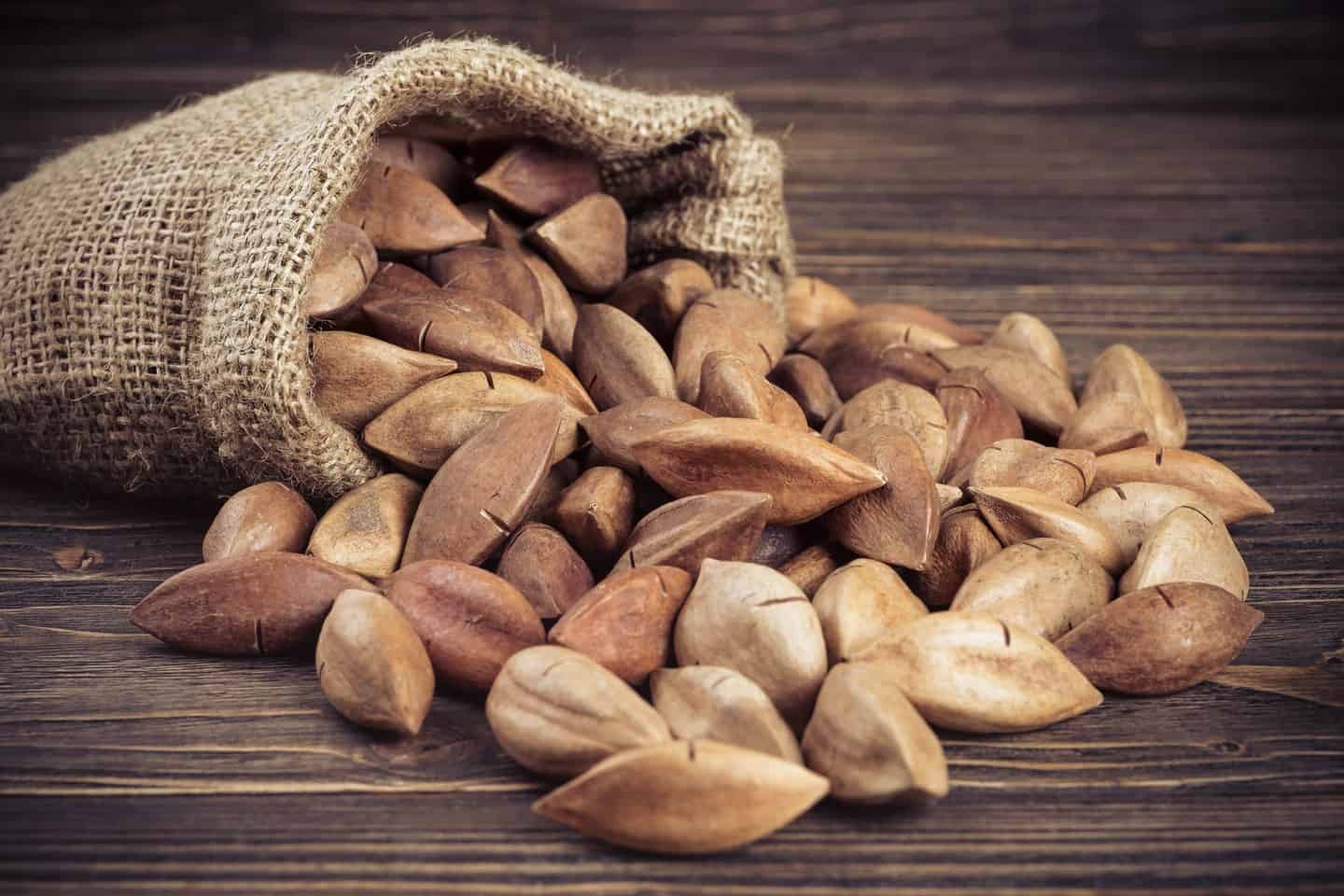Growing demand for pili nuts in the United States and other countries begs the question – what the hype’s all about?
These nuts are touted to have a slew of nutritional benefits, but in retrospect, very few know much about them.
And if you’re planning to stock up on these nuts for inclusion into your daily diet, you need comprehensive info.
In this post, we’ll be taking a look at everything about these nuts. With access to correct information, it becomes easier to add these nuts to several diets comfortably.
And aside from the nutrition facts of these nuts, there’s more!
Having advanced knowledge will help you get effective daily nutritional benefits from this Asian wonder nut.
Table of Contents
What are Pili Nuts?
Pili nuts are delicious, healthy seeds with several benefits touted to aid heart and overall health. The seeds are used as food in several Asian countries and are becoming an integral addition to the diet in American and European nations.
Pilis harvested from the Philippines and neighboring cultivating countries are ranked as high sources of nutrition. Most buyers from foreign countries order their pili nuts from the Philippines.
Other Essential Facts about the Pili Nut
Location
Pili nuts are native to tropical Southeast Asia countries and are particularly common in the Philippines. Four of its main varieties are found in this country where massive cultivation takes place
Most pili nut trees are located in the Bicol Region and thrive in several areas even in harsh environmental conditions.

Pili hunters usually throng to this location based on its rich supply of pili nuts for commercial purposes. And most skilled pili hunters and harvesters can be found around this region too.
Production of this Superfood takes some meticulous craftsmanship, making it a favorite for many nutrition seekers.
Cultivation, Harvesting, and Storage
Cultivation
Extensive detailing goes into the production of these nuts. Pili hunters native to the Bicol region usually have to nurture canarium ovatum (pili tree) for about half a decade. Some care and nurturing of specific pili trees varieties may take up to six years to complete.
After extensive care and patience, the pili tree usually begins to bear fruit from April.
Harvesting
Pili nuts are usually ripe for harvesting from late April to early October. In some productive seasons, harvesting could spill over into early November. Peak harvesting time usually revolves around May to late August.
Storage
After harvesting, the pili nut goes through extensive de-pulping, cleaning, and drying.
Harvesters need to go through five shells during the storage process to access edible nuts. Pili nutshells range from light green to black and vary in sturdiness. But among all shells, the last one proves to be the toughest.
The toughness of pili nuts shells make some potential consumers abandon firsthand cultivation and production altogether. Such customers turn to commercially produced, pre-packaged options for their nutrition.
Shell Cracking
Rated as one of the hardest de-shelling processes of any nut, the nut normally gets processed in source regions.
Local de-shelling experts, known as paratilad dry the nut for three to four days before processing. Drying the shell promotes detachment targeted at easy shell removal.
These de-shelling pros use a bolo – a local knife used for cracking nutshells open. The process begins with cracking each shell from its mid-section with precise force until it opens up.
While crude opening methods damage the edible nuts, one paratilad can produce more than 50kg of edible seed each day!
Feel, Taste and Appearance
De-shelled pilis have varying textures based on their current state.
Dried and roasted nuts usually have a buttery texture and chewy exterior newbies tend to love in an instant. Dried, roasted pilis could have a taste similar to almonds based on their preparation.

Nuts fresh off the pili tree usually have a softer texture than dried, roasted pilis with a marked taste difference.
Pilis have an appearance similar to that of dates but with pointier ends. And peeled pilis have a white outlook that’s soft or hard based on its processing stage.
Nutritional Content
Monounsaturated fats
High saturated fat and other healthy fats feature edible pili pulp. Foods rich in fats help improve overall health.
Complete protein
With its comprehensive protein composition, eight essential amino acids feature in pilis. Amino acids our body needs from each diet are present in the right ounce per serving measurement.
And with so many proteins, taking these nuts after an intense workout session helps you max out overall body health.
Magnesium
In some circles, pilis is ranked as the highest with magnesium content. And apart from high levels of protein, magnesium help in several processes our bodies need to function daily.
Vitamin E
Asides from being rich in magnesium and monounsaturated fats, pilis proves to be a good source of vitamin E. The overall improvement potential of vitamin E makes it a great option for several diet needs.
Health Benefits of Pili Nuts
There are several health benefits of pili nuts. Everyone requires most of these benefits each day. So, it’s worth checking out what these nuts have in store;
Promotion of cardiovascular health
Pili nuts contain a high protein makeup for improved heart health and body development. The high protein levels also make these nuts an ideal choice for cholesterol balancing.
And since most people have an unending desire for fats in their meals, these nuts help maintain lower cholesterol.

Some extensive processing techniques use these nuts in making oils. So, if you’re worried about cholesterol intake, this nut should be an ideal alternative for several needs.
Improved skin health
The high vitamin E content of pilis aids in enhancement of skin and hair health. Some die-hard lovers of this nut leverage its oil for hair and skincare.
Bone support
High calcium content in pilis helps in improved bone strength over time. Adding this to your daily food intake promotes better consumption of this vital component.
FAQs
What is pili nuts in English?
Pili (peeley) nuts are digestible seeds from South East Asia with high fat and nutrition content per serving. Native to the Philippines, the nuts prove a healthy addition to several diets.
Is Pili nut healthy?
Pili nuts have anti-oxidant support among several health benefits along with a delicious taste to boost. Anti-oxidation helps prevent damage from free radicals in the human body. These nuts are also high in protein required for smoother body metabolism.
These nuts contain calcium, magnesium, vitamin E, and more nutrients in rich amounts, making them a favored Superfood.
Why are pili nuts so expensive?
The pili nut costs more money than regular nuts due to its extensive demand for time, energy, and resources.
Some pili trees take several years to bear fruit and require skilled personnel for effective harvesting.
What do pili nuts taste like?
Pili nuts adopt a light sunflower seed flavor when consumed without roasting.
Roasted pili nuts, on the other hand, have a chewy exterior and buttery interior. Some people think pili nuts taste like foie gras, others liken their flavor to almonds.

Final Word
With a high demand for pili nuts right now, you can’t help but read up on all it has to offer. And if you’ve been having two minds about these nuts, essential facts right here show how important they can be.
If you need nuts that contain a high source of fat and proteins with low calories, pilis are excellent options. And these nuts can be drained for their high-fat oil as an alternative for better heart support.
Make the most of what this post offers. And with this post, you’ll get that dose of pili you need for high-powered, low calories nutrition!

I started my sporting career at the age of 3 in the preparation of ice hockey. I spent sixteen years playing ice hockey, and I remember the summer preparations today. What are my passions? It is still fitness training, all kinds of workouts and the most important is a healthy lifestyle. You can’t just do a workout without the right way of life. You need to stay curious and listen to your body.


